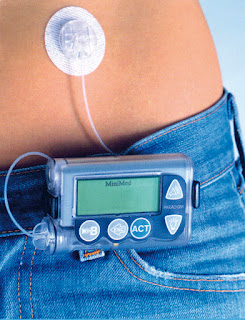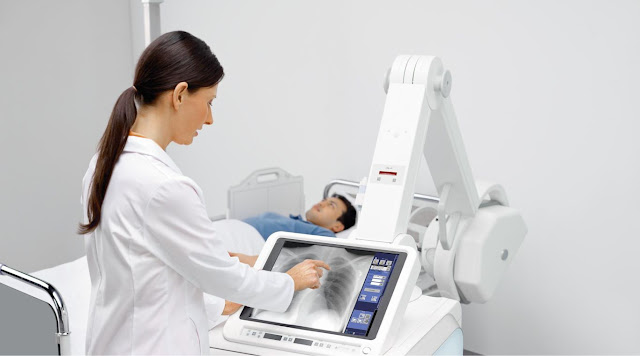To use an Insulin Pump, we need to have in-depth analysis about diabetes care
 |
| Insulin Pumps |
Insulin pumps are tiny, automated devices that imitate the
human pancreas' function by continually administering small quantities of
short-acting insulin (basal rate). When a meal is consumed, the gadget also
delivers varied doses of insulin (bolus). Basal insulin rates are normally
configured in your pump with the help of your doctor, and you can have one or
several basal settings depending on your needs. The quantity of insulin for
your mealtime bolus is programmed directly into the pump. Most insulin pumps
include built-in bolus calculators that may help you figure out how much
insulin you need at meals based on your blood sugar levels and the quantity of
carbs you're consuming.
The pump, which is approximately the size of a smartphone or
a deck of cards, is worn on the outside of your body and distributes insulin
through a tube (catheter) that is attached to a small cannula that is inserted
into the layer of fat beneath your skin, usually around your stomach area. Insulin
pump can be worn in a pump case around your waist, on a belt or
bra, in a pocket, or on an armband. You may carry your insulin pump with
stylishly thanks to a range of custom-made attachments.
Various Types of
Insulin Pump-
Insulin pumps come in a range of styles, and your diabetes
care team may assist you in selecting the right one for you. There are two
types of pump devices in general:
·
Traditional
insulin pumps feature an insulin reservoir (or container) and pumping
motor, as well as tubing and an infusion set to connect to the body. The body
of the pump has buttons that allow you to schedule insulin administration for
meals, particular types of basal rates, and, if required, to halt the insulin
infusion.
·
Insulin
patch pumps are tiny cases with a reservoir, pumping mechanism, and
infusion set that are worn directly on the body. A second device controls patch
pumps remotely, allowing setting of insulin administration for meals from the
patch.
Pumps differ in terms of the amount of insulin they contain, whether they have a touch screen or are waterproof, and if they offer a range of technological and safety features. Programmable boluses, customisable reminders, notifications for missing bolus doses or missed glucose measurements, and alarms in the case of a blockage that precludes the continuous infusion of insulin via the pump are all possible safety and user features. One of the integrated devices, which includes an insulin pump with a continuous glucose monitoring sensor, may also be configured to stop delivering insulin if glucose levels fall below a certain level.



Comments
Post a Comment